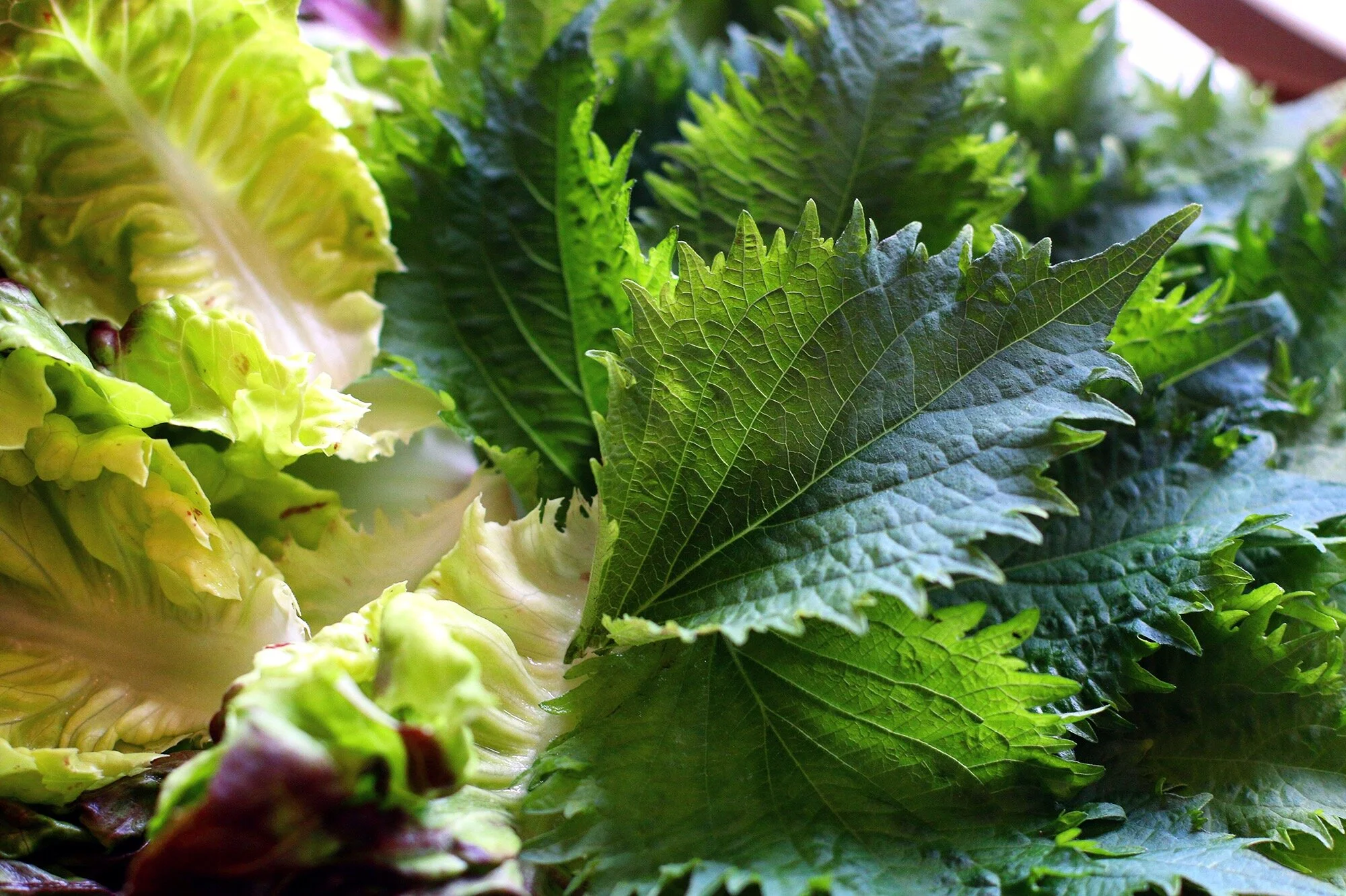Ssam 쌈
Ssam literally translates to wraps. The double “s” is on purpose for heavy emphasis. When pronouncing the word, remove the thought of Uncle Sam from the mind and imagine an “ahhh” in the middle of the word.
With Korean food getting popular outside of the country, and my exorbitant intake of eating ssam whenever I can, I assumed that everyone knew what it was. But I guess the only thing I can assume is if autocorrect doesn’t recognize the name of a certain dish, there are folx that are also mystified as to what ssam is.
The beauty of Korean food is the variety of ingredients and thousands of combinations that you can produce for any dish, but let me break down the basic components that will make a wrap of approval.
Wraps
Red leaf lettuce is the most common wrap for ssam, but you can have a variety of greens. Kkaennip (perilla leaves) gives a slight black licorice and mint flavor that really punches up the bundle. Thinly sliced mu (Korean radishes) marinated in vinegar and sugar also play nicely together. The main note you're looking for in the wrap is something that is refreshing and can hold the package of umami you're gently trying to cram into your face.
Main Protein
I label this section “main protein” because you could use marinated tofu or mushrooms, but usually, ssam is eaten with a succulent piece of pork, beef, or chicken. Pro tip: any sort of savory leftovers works wonders in this scenario. This component is the meat of the assortment. Pun intended.
Toppings
The toppings. Some say it's the most important part. I say you can't have one without the other two. Ssamjang, which translates to "wrap paste", is the most common dipping sauce that you'll see served with ssam. The fermented soybeans and red pepper paste mixed together with a few other pungent ingredients will make your lettuce wrap incomprehensibly flavorful. Now, I say “toppings” because kimchi and pa-muchim are also welcomed players, but that is going the extra mile. For me, it's non-negotiable. It’s the thinly sliced raw garlic clove I save for special occasions.
You. Are. Ready. You’ll notice I haven’t mentioned rice, which can seem like blasphemy even in my household, but it’s true that the beloved cooked grain is only associated if you call it ssambap. This is when you put the rice in the wrap. I usually serve rice to go with whatever jjigae (stew) and banchan (side dishes) I’m also serving with the meal.
So now you know how to whip this meal up whenever you’re feeling a craving for fresh and umami combinations. It’s your duty to spread the word.









